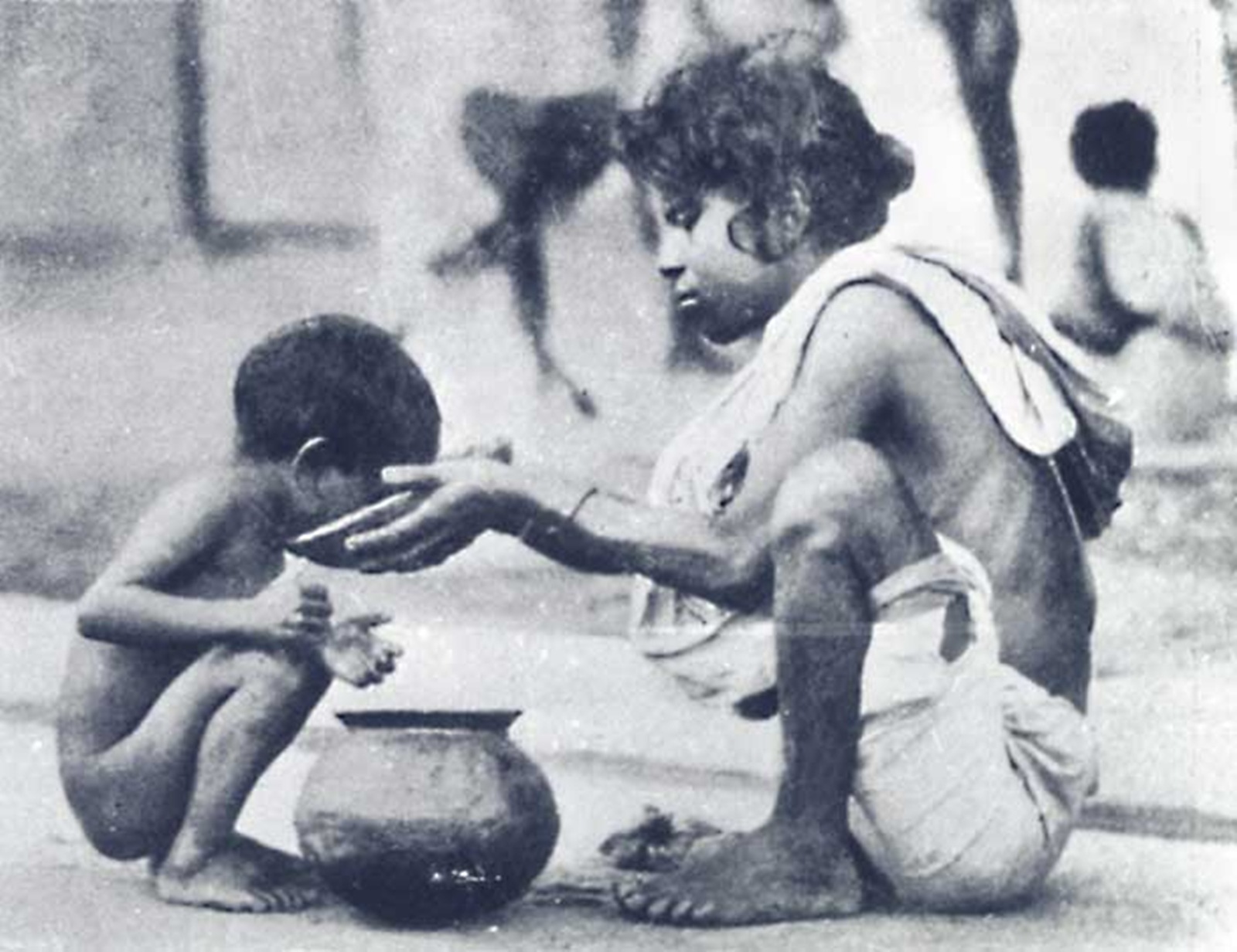📣 For more lifestyle news, click here to join our WhatsApp Channel and also follow us on Instagram
Indians are overtaking the world when it comes to obesity; we talk to doctors to understand why
While the world is experiencing an obesity crisis, India’s battle is shaped by a complex tangle of history, biology, culture, and urban lifestyle shifts, making it one of the most urgent public health challenges of the 21st century.
 India’s tryst with obesity may have deeper roots. Not in fast food or sedentary jobs, but in centuries of starvation and famine. (Image: Canva)
India’s tryst with obesity may have deeper roots. Not in fast food or sedentary jobs, but in centuries of starvation and famine. (Image: Canva)India, a nation once haunted by famine, now finds itself in the grip of a different crisis — an epidemic of abundance.
A 2025 study in The Lancet warned that within the next 25 years, nearly 450 million Indians — over 21 crore men and 23 crore women — will be overweight or obese. That’s almost a third of the country’s projected population. More worrying still, the steepest rise is among 15–24-year-olds, with India overtaking the United States and China in absolute numbers.
While the world is experiencing an obesity crisis, India’s battle is shaped by a complex tangle of history, biology, culture, and urban lifestyle shifts, making it one of the most urgent public health concerns of the 21st century.
Why BMI doesn’t tell the full story
The Body Mass Index (BMI), long used as a global yardstick for obesity, has serious blind spots when applied to South Asians.
“BMI is a blunt tool. It was designed using European populations and doesn’t account for fat distribution or ethnicity-based differences,” explained Dr Ankit Potdar, consultant bariatric surgeon at Kokilaben Dhirubhai Ambani Hospital, Mumbai.
According to him, Indians tend to store more fat, especially around the abdomen, even at lower BMIs. An Indian with a BMI of 23 can carry the same metabolic risk as a Caucasian with a BMI of 28–30.
“When measured with body fat percentage or waist circumference, Indians often rank higher in obesity-related risks, even if their BMI appears normal,” Dr Potdar said.
 The BMI (Body Mass Index), long used as a standard measure of obesity, has serious blind spots when applied to South Asians. (file)
The BMI (Body Mass Index), long used as a standard measure of obesity, has serious blind spots when applied to South Asians. (file)
The World Health Organization (WHO) has acknowledged this discrepancy, adjusting the BMI cut-offs for Asians. For Indians:
- Overweight: BMI > 23
- Obese: BMI > 25
This recalibration is more than academic. Dr Kedar Patil, a bariatric surgeon at Ruby Hall Clinic in Pune, pointed out, “Because of the increased risk of cardiovascular disease and diabetes, the WHO lowered the thresholds. A BMI of 23 is already a red flag for Indians.”
A colonial hangover in our DNA?
India’s tryst with obesity may have deeper roots. Not in fast food or sedentary jobs, but in centuries of starvation and famine.
Between the 18th and 20th centuries, India endured several catastrophic famines under British colonial rule, from the Great Bengal Famine of 1770 to the devastating Bengal Famine of 1943. While environmental conditions played a role, historians agree that colonial policies, including forced grain exports, deepened the crisis.
Modern science suggests these episodes of starvation may have left a biological legacy.
“There’s growing scientific interest in this connection,” said Dr Potdar, adding, “The ‘thrifty phenotype hypothesis’ proposes that generations exposed to famine adapted by storing fat more efficiently, an evolutionary survival mechanism.”
 (Source: Wikimedia Commons)
(Source: Wikimedia Commons)
This adaptation was once useful. But in an era of urbanisation and calorie-dense food, it’s become harmful.
“We are now biologically primed to store fat quickly, burn fewer calories at rest, and resist weight loss,” Dr Potdar said. “That’s why we see higher rates of diabetes and heart disease, even in lean-looking Indians.”
This theory is supported by similar findings in other famine-affected populations, like Dutch and Chinese survivors, whose descendants also show higher risk of obesity and diabetes.
Men, women, and the metabolic gender gap
At the center of the Indian obesity crisis lies a familiar and often joked-about image: the pot belly.
At the heart of India’s obesity crisis lies the pot belly — medically, abdominal obesity, where visceral fat builds up around internal organs like liver and pancreas, disrupting insulin and sugar regulation.
“Indian men tend to deposit more visceral fat, which sharply raises the risk of heart disease, fatty liver, and insulin resistance, even if their overall weight seems normal” said Dr Patil.
 At the center of the Indian obesity crisis lies a familiar and often joked-about image: the pot belly. (Image: Canva)
At the center of the Indian obesity crisis lies a familiar and often joked-about image: the pot belly. (Image: Canva)
Women face different but equally serious risks. “Indian women naturally have a higher body fat percentage (18–28 per cent) and tend to store it in the hips and thighs,” said Dr Potdar. “This can contribute to PCOS, fertility issues, and metabolic syndrome.”
“Both Indian men and women are more metabolically obese than their Western counterparts,” Dr Patil explained. “Even people who appear lean may have unhealthy fat stored in and around organs.”
Can we fight biology? Or should we work with it?
Given these predispositions, is weight loss a futile battle? Experts don’t agree, but the strategy matters.
“When Indians lose weight too quickly, the body triggers a famine response: metabolism slows, hunger hormones spike, and fat gets stored even more stubbornly. This is not a willpower issue. It’s biology defending against starvation,” said Dr Potdar.
 Biology dictates reality. Given our genetic predispositions, is weight loss a futile battle? The experts don’t agree, but the approach matters. (Source: Wikimedia Commons)
Biology dictates reality. Given our genetic predispositions, is weight loss a futile battle? The experts don’t agree, but the approach matters. (Source: Wikimedia Commons)
Rather than crash diets or extreme goals, both doctors recommend a sustainable, biology-aware approach:
- High-protein, low-GI diets to support fat loss while maintaining muscle.
- Strength training and HIIT can help counteract a slowed metabolism.
- Behavioural therapy to address emotional eating and long-term habits.
- Regular metabolic monitoring, not just scale-watching.
For those with morbid obesity or uncontrolled metabolic disease, bariatric surgery can be transformative. “It can reset hunger signals and deliver sustained 30–50 kg weight loss, while drastically reducing diabetes, stroke, and heart disease risk,” said Dr Patil.
This is bigger than willpower
India’s obesity epidemic is not just a matter of overeating or under-exercising. It’s a deeply systemic issue shaped by colonial trauma, biological adaptation, rapid modernisation, and socio-economic transition. The standard tools used to measure and manage obesity — like BMI — often fail to capture the unique risks Indians face.
To address this crisis, India needs a multi-pronged strategy: public health policies tailored to ethnic risk profiles, better diagnostic tools beyond BMI, culturally relevant diet and fitness programs, and above all, an empathetic approach that doesn’t blame individuals, but understands the roots of their biology.
For millions of Indians, the path forward isn’t about conforming to aesthetic ideals, but reclaiming metabolic health in a way that works with — not against — our evolutionary design.
“Let’s stop blaming bodies and start understanding them,” Dr Potdar said. “For Indians, the fight against obesity is historical, metabolic, and deeply embedded in our genes.”
📣 For more lifestyle news, click here to join our WhatsApp Channel and also follow us on Instagram





- 01
- 02
- 03
- 04
- 05






















